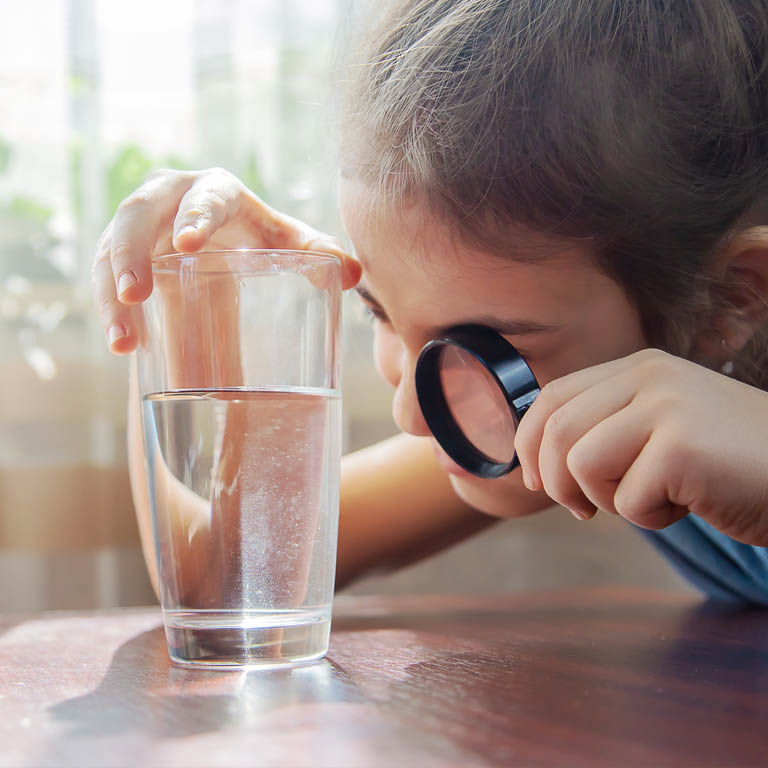Water Issues
Checking for Leaks
-
Your water meter is the most important device in your home to check for water leaks. To see if you have a water leak:
- Turn off all taps around your home and automatic water softeners, humidifiers, sprinkler systems, etc.
- Ask everyone to avoid using water (e.g., going to the washroom or turning on a tap) for the next 15 minutes.
- Find your water meter. It is usually located in the basement, near an outside wall.
- Note the meter reading on your Meter.
- Wait 15 minutes.
- If there are new numbers displayed when you read your meter, you have a leak somewhere inside your home or from your outdoor water taps or underground sprinkler system.
- The most common area for water leaks is your bathroom, kitchen, laundry room, and outdoors
Bathroom
- Toilets
- Take the lid off the tank.
- Squirt a drop of dark food coloring into the water.
- DO NOT FLUSH THE TOILET for 15 to 30 minutes.
- Check the toilet bowl for colored water; if present, your toilet is leaking.
- Taps
- Check to see if taps are dripping; if so, replace the washer in the faucet.
- Check for damp areas around your faucet or water lines to see if a leak is present.
- Check to see if taps are dripping; if so, replace the washer in the faucet.
- Check for damp areas around your faucet or water lines to your dishwasher or fridge to see if a leak is present.
- Check to see if the taps leading to your washing machine are dripping. If so, replace the washer in the faucet.
- Ensure your water softener has enough salt in it; the softener may keep trying to ‘regenerate’ the brine when there is no salt, resulting in wasted water.
- Fix any leaks in your garden hose.
- Replace worn out washers in garden nozzles and sprinklers.
- Check for moist spots in your lawn on days you have not watered; constantly damp grass may indicate a leak in your underground sprinkler.
Kitchen
Laundry room
Outdoors
Protect Our Town's Sewer
We have experienced sewage blocks from grease and fat being put down sinks and toilets by local residents. When you flush or wash oil from your deep fryers or fat from cooking food like bacon, it forms a plaque on the inside of sewer pipes. No matter how much hot water you try to flush after the fat, eventually it cools and forms a coating in the sewer pipes which collects other debris and will eventually cause a block in sewer pipes. This will result in the towns sewer lines backing up into your house and your neighbours’ houses.
We recommend you wait for the grease or fat to cool and put it in your garbage. Another option is to pour it into an old can or glass jar when it is hot and let it cool and then place the container in the garbage. Taking the extra care will save a lot of cost and frustration down the road.
Did you know it is also harmful to flush the following items down the toilet:
- • Personal care wipes/baby wipes
- • Diapers
- • Cotton swabs
- • Hair
- • Dental floss
- • Tampons
- • Sanitary products
- • Condoms
- • Old medicines
While products may be advertised as "flushable," in reality, items such as baby wipes, makeup remover cloths, tampons and disinfectant wipes do not decompose in the sanitary sewer system. Flushing this material causes damage to the sewer system and may cause sewer backups in your home. Flushables should be disposed of in the garbage.
Old medication can be taken to both Pharmasave and IDA pharmacies in the Town of Moosomin. Keeping medication out of the lagoon means that it will not be released back into the environment during spring and fall release.

